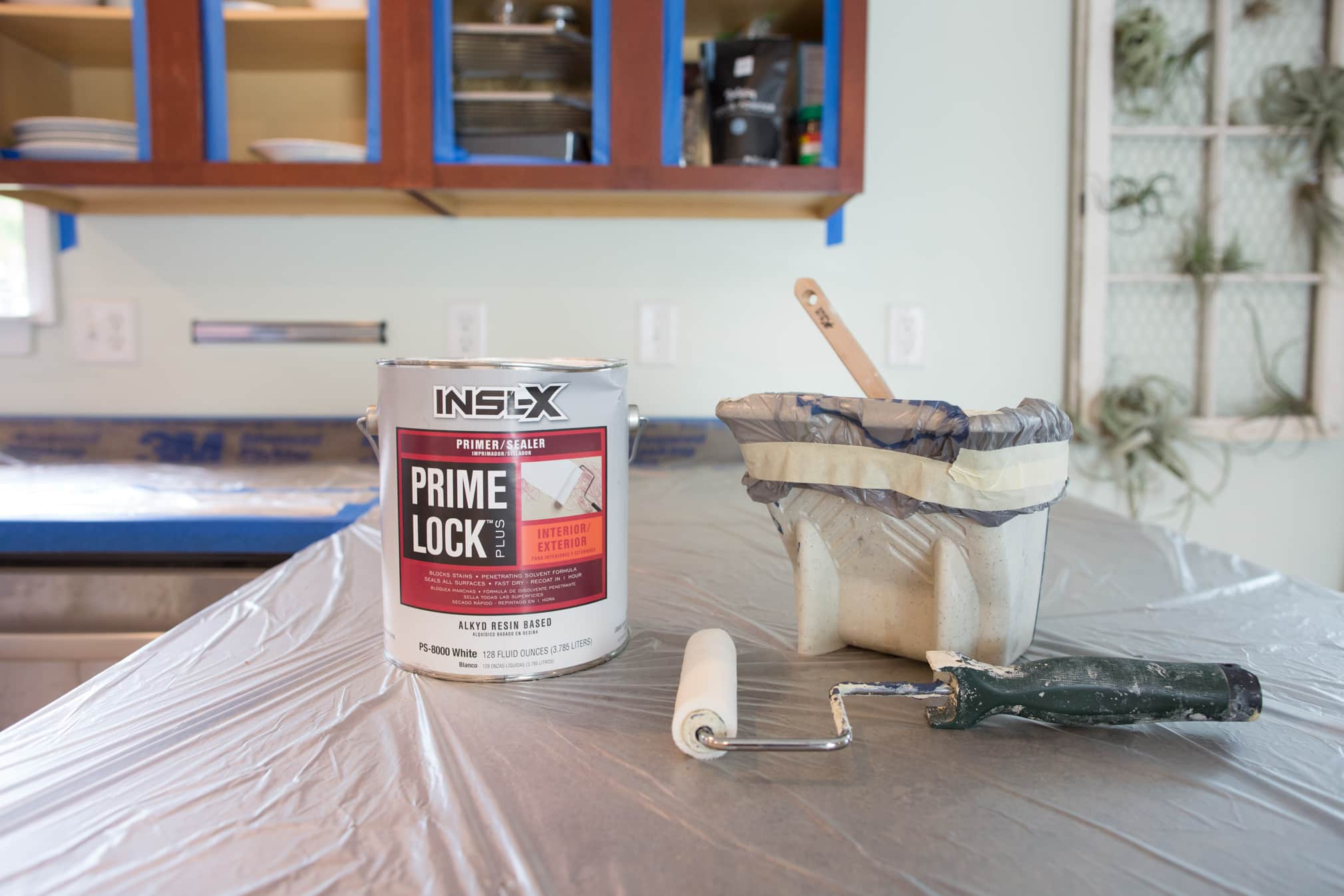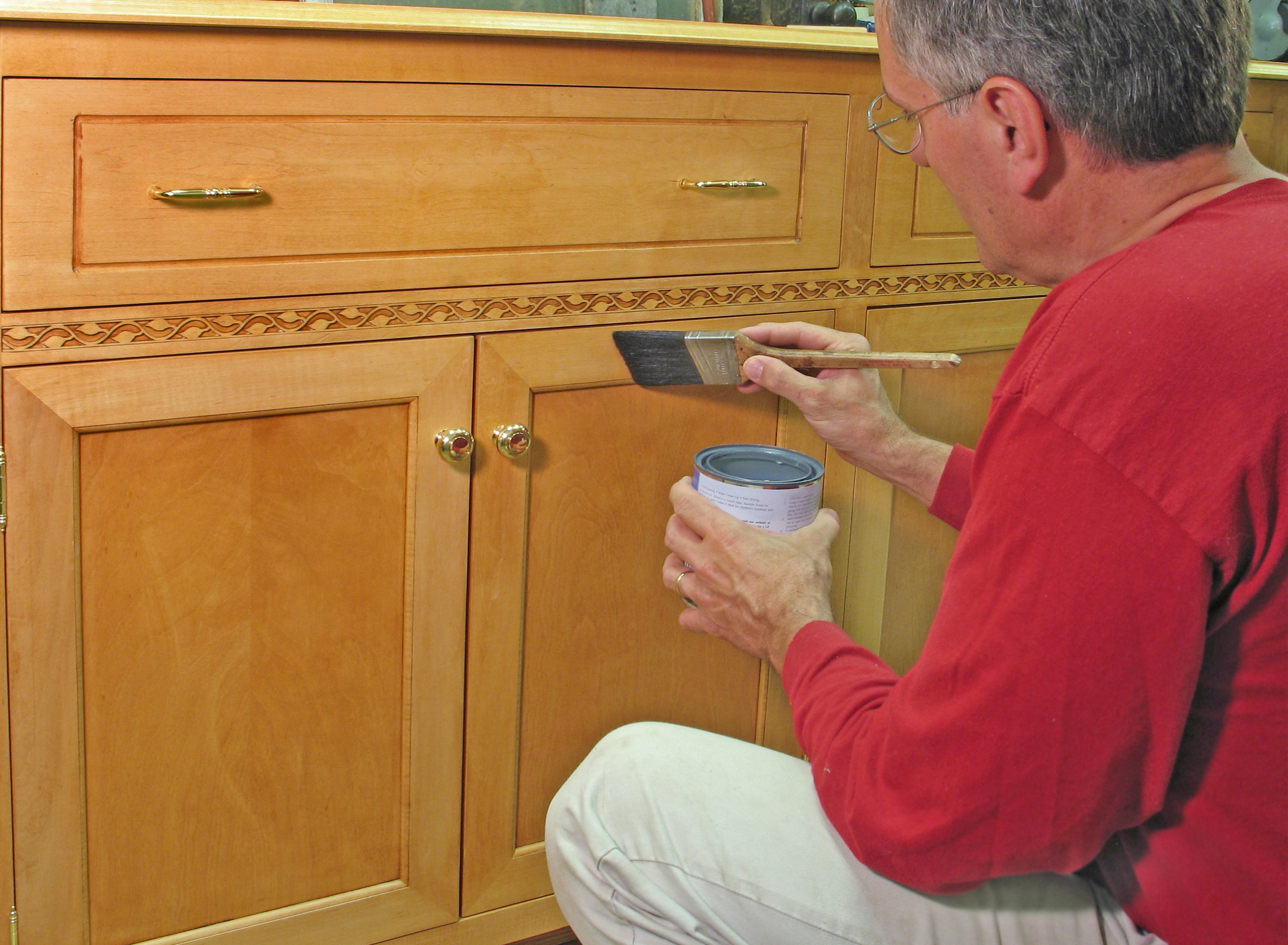Product Comparison
Choosing the right cabinet paint and primer in one can significantly impact the final look and longevity of your kitchen or bathroom remodel. This comparison focuses on three popular brands, highlighting their strengths and weaknesses to aid in your selection process. Factors considered include ease of application, coverage, drying time, cost, and durability.
Cabinet Paint and Primer in One: Brand Comparison
The following table summarizes key features, coverage, and price points for three leading brands of cabinet paint and primer in one. Note that prices can vary based on retailer and paint volume.
| Brand | Key Features | Coverage (approximate) | Price (per gallon, approximate) |
|---|---|---|---|
| Benjamin Moore Advance | Low odor, self-leveling, excellent adhesion, durable, scrubbable. | 350-400 sq ft per gallon | $75 – $90 |
| Sherwin-Williams Emerald Urethane Trim Enamel | Durable, stain-blocking, excellent for high-traffic areas, resists chipping and scratching. | 300-350 sq ft per gallon | $65 – $80 |
| KILZ Cabinet, Door and Trim Paint | Excellent primer and paint in one, good adhesion, affordable option. | 300-350 sq ft per gallon | $40 – $55 |
Application Methods and Surface Preparation, Cabinet paint and primer in one
Proper surface preparation is crucial for achieving a professional-looking and long-lasting finish. The following steps are recommended for each brand, although minor variations may exist based on specific product instructions.
Cabinet paint and primer in one – The application process, while similar across brands, requires attention to detail for optimal results. Thorough surface preparation is essential for adhesion and a smooth finish. Using high-quality brushes or rollers further enhances the final look.
- Benjamin Moore Advance:
- Clean cabinets thoroughly with a degreaser.
- Lightly sand to create a smooth surface and improve adhesion.
- Fill any holes or imperfections with wood filler.
- Apply two coats using a high-quality brush or roller, allowing adequate drying time between coats.
- Sherwin-Williams Emerald Urethane Trim Enamel:
- Clean cabinets with a TSP solution (trisodium phosphate).
- Sand surfaces lightly to ensure a smooth finish.
- Caulk any gaps or cracks.
- Apply two coats, allowing sufficient drying time between applications.
- KILZ Cabinet, Door and Trim Paint:
- Clean cabinets thoroughly with soap and water.
- Lightly sand glossy surfaces to improve adhesion.
- Prime bare wood or heavily damaged areas with a suitable primer.
- Apply two coats, ensuring proper drying time between coats.
Durability and Longevity
The durability and longevity of these paints vary. Benjamin Moore Advance is known for its exceptional durability and resistance to chipping and scratching. Sherwin-Williams Emerald Urethane Trim Enamel also offers excellent durability, particularly in high-traffic areas. KILZ Cabinet, Door and Trim Paint provides good durability for its price point but may not withstand the same level of abuse as the premium options. All three paints offer good resistance to fading, but yellowing can occur over time depending on sun exposure and environmental conditions. Proper surface preparation and application significantly impact the long-term performance of any paint.
Application Techniques and Best Practices

Successfully painting kitchen cabinets with a paint and primer combination requires careful preparation and precise application. Achieving a professional, durable finish hinges on meticulous attention to detail throughout the entire process, from surface preparation to the final brushstrokes. This section Artikels the essential steps and techniques for optimal results.
Cabinet Preparation for Painting
Proper preparation is paramount for a flawless finish. Neglecting this stage can lead to paint adhesion problems and an uneven, unprofessional look. The following steps ensure your cabinets are ready for the paint and primer.
- Clean the Cabinets: Thoroughly clean the cabinet surfaces with a degreasing solution to remove grease, grime, and any existing finishes. Use a soft cloth or sponge and rinse well with clean water. Allow to dry completely.
- Sand the Cabinets: Lightly sand the cabinet surfaces with fine-grit sandpaper (180-220 grit) to create a slightly rough surface that promotes better paint adhesion. Focus on any imperfections or uneven areas. Wipe away dust with a tack cloth.
- Prime (If Necessary): While many paint and primer combinations offer excellent coverage, additional priming may be necessary for heavily stained or glossy surfaces. Use a high-quality primer compatible with your chosen paint. Apply a thin, even coat and allow it to dry completely before painting.
- Caulk and Fill Gaps: Use a high-quality paintable caulk to fill any gaps or cracks between cabinet doors, drawers, and frames. Allow the caulk to dry completely and then sand it smooth for a seamless finish.
- Mask Hardware and Surrounding Areas: Protect any hardware that you’re not painting and surrounding areas (walls, countertops) using painter’s tape and drop cloths.
Applying Cabinet Paint and Primer
Applying the paint and primer requires a steady hand and consistent technique to achieve a smooth, even finish. Avoid rushing the process; multiple thin coats are superior to one thick coat.
- Stir the Paint: Thoroughly stir the paint and primer combination to ensure even pigment distribution.
- Apply the First Coat: Using a high-quality brush or roller, apply a thin, even coat of paint, working in the direction of the wood grain. Avoid overloading the brush or roller, as this can lead to drips and runs.
- Allow Drying Time: Allow the first coat to dry completely according to the manufacturer’s instructions. This typically takes several hours.
- Sand Lightly (Optional): Lightly sand between coats with very fine-grit sandpaper (320 grit or higher) to smooth out any imperfections. Wipe away dust with a tack cloth.
- Apply Subsequent Coats: Apply additional coats as needed, following the same technique as the first coat. Allow each coat to dry completely before applying the next.
Common Painting Mistakes and Remedies
Several common mistakes can hinder the quality of your cabinet painting project. Understanding these issues and their solutions will help you avoid costly rework.
- Uneven Coverage: Caused by applying paint too thickly or unevenly. Remedy: Sand lightly and reapply thin coats.
- Brush Strokes: Visible brush strokes result from improper technique or using a low-quality brush. Remedy: Use a high-quality brush and apply thin, even coats with smooth, consistent strokes.
- Drips and Runs: Caused by applying too much paint at once. Remedy: Apply thin coats and allow each coat to dry completely before applying the next.
- Poor Adhesion: Caused by insufficient surface preparation or using incompatible paint and primer. Remedy: Ensure proper surface preparation and use compatible products.
- Dust or Debris: Dust or debris in the paint can create imperfections in the finish. Remedy: Work in a clean environment and use a tack cloth to remove dust between coats.
Illustrative Representation of Correct Brushstrokes
Imagine a square divided into four smaller squares. In each smaller square, paint strokes are applied in a consistent direction. In the top left square, strokes move from top to bottom. The top right square shows strokes from left to right. The bottom left square demonstrates diagonal strokes from top left to bottom right, and the bottom right shows diagonal strokes from top right to bottom left. This overlapping pattern, using smooth, even pressure, minimizes visible brush strokes and creates a uniform finish. The strokes in adjacent squares should slightly overlap to ensure complete coverage.
Color Selection and Design Considerations: Cabinet Paint And Primer In One

Choosing the right color for your kitchen cabinets is a crucial step in achieving your desired aesthetic. The color you select significantly impacts the overall feel and functionality of your kitchen, influencing everything from mood to perceived space. Careful consideration of color palettes, sheen levels, and existing décor is essential for a cohesive and visually appealing result.
Color palettes for kitchen cabinets offer a wide range of options, depending on personal preferences and kitchen style. Understanding current trends and classic choices helps narrow down the possibilities.
Kitchen Cabinet Color Palettes
The selection of colors for kitchen cabinets significantly impacts the overall atmosphere of the space. Different color palettes can create various moods and styles, ranging from classic elegance to modern minimalism.
- Classic White: A timeless choice, white cabinets create a bright, airy feel, making smaller kitchens appear larger. Pairing white cabinets with warm wood tones or metallic accents offers versatility. Example: White cabinets with dark brown countertops and brushed nickel hardware.
- Warm Neutrals: Beige, greige (gray-beige), and taupe offer a sophisticated and calming atmosphere. These colors pair well with various styles, from rustic to modern. Example: Greige cabinets with white subway tile backsplash and light wood flooring.
- Navy Blue: A bold and dramatic choice, navy blue cabinets add depth and richness. They work well in both traditional and contemporary kitchens. Example: Navy blue cabinets with white quartz countertops and gold hardware.
- Gray: Gray cabinets offer a versatile neutral backdrop, allowing for flexibility with other colors and textures. Different shades of gray can create various moods, from cool and modern to warm and inviting. Example: Light gray cabinets with a marble backsplash and stainless steel appliances.
- Two-toned Cabinets: Combining two colors, such as white upper cabinets and dark lower cabinets, creates visual interest and can make a room feel larger. Example: White upper cabinets and dark green lower cabinets with a stainless steel range hood.
Sheen Levels and Their Impact
The sheen level of your cabinet paint significantly affects both the visual appeal and the practical durability of the finished product. Each sheen offers a unique look and level of protection.
| Sheen Level | Appearance | Durability | Cleanability |
|---|---|---|---|
| Matte | Flat, hides imperfections | Low | Low |
| Satin | Slight sheen, subtle reflection | Medium | Medium |
| Semi-gloss | Noticeable sheen, reflects light | High | High |
| Gloss | High sheen, significant reflection | Very High | Very High |
Color Coordination with Existing Décor
Harmonizing cabinet color with existing kitchen elements is crucial for a cohesive design. Consider the countertops, backsplash, flooring, and appliances when selecting a cabinet color. Complementary colors create a balanced look, while analogous colors offer a more unified feel. For example, warm wood tones complement warm neutral cabinets, while cool gray cabinets pair well with white or light blue backsplashes.
Cabinet paint and primer in one is a convenient option for repainting kitchen cabinets. Apply two coats for optimal coverage and durability. Proper surface preparation, including cleaning, sanding, and priming (if necessary with a dedicated primer before the paint and primer in one), is crucial for a professional finish. Use high-quality brushes or rollers for even application and allow ample drying time between coats. Always test the paint in an inconspicuous area before applying it to the entire surface. Maintaining a clean work area and using appropriate safety measures, like wearing a mask and gloves, is essential throughout the process.
